What are you looking for?
What is Gamification?
Gamification is a technique which designers use to insert gameplay elements in non-gaming settings, so they enhance user engagement with a product or service. By weaving suitably fun features such as leaderboards and badges into an existing system, designers tap users’ intrinsic motivations so they enjoy using it more
.
Learn more about how Gamification fits into user experience design:
“Games give us unnecessary obstacles that we volunteer to tackle.”
— Jane McGonigal, American designer and author
The Appeal of Gamification in User Experience (UX) Design
Gamification is a powerful tool to drive user engagement for several reasons. It’s not about transforming user interfaces into games. Instead, you use it to inject fun elements into applications and systems that might otherwise lack immediacy or relevance for users. When you do this right, you incentivize users to achieve goals and help them overcome negative associations they may have with the system and the tasks it requires them to complete. The dynamics designers incorporate in successful gamification themselves serve as effective intrinsic motivation. This means that users engage with the system because they want to. For instance, Foursquare/Swarm promotes users to “Mayors” of establishments after so many visits, enabling them to compete for top place while enjoying meals, shopping, movies, etc.
To inspire users by introducing gamification into an existing system, you should apply gameplay and the structure of rules and goals to “serious” or mundane tasks. You can gamify systems in many ways, from countdowns to encouragement for completing x percent of a task. People enjoy interactivity and satisfying their curiosity. Sometimes, you can use a suitable social element to increase their engagement.
The Challenge for UX Designers
Gamification is notoriously difficult. You should strike a cautious balance between the “fun factor” and the tone of the subject matter. Moreover, you must tailor the gameplay and the rewards precisely to the users. The degree of apparent gamification and the nature of trophy-like awards that are suitable for an app where friends compete won’t suit a corporate environment that prefers more subtle approaches. Simultaneously, you must fulfill certain user needs if “players” are to use the system without forcing themselves to. Such needs include:
- Autonomy – Users’ actions must be voluntary; you shouldn’t push them to adopt desired behaviors but instead insert subtle elements/prompts which they can find on their own and therefore feel in control of their experience.
- Relatedness – Users need to feel that your brand cares about what matters to them. Customizing your design’s content and tone to them are especially useful for fostering their loyalty.
- Competence – Related to autonomy, this need is about keeping users comfortable as they discover your design by never feeling overwhelmed or confused. For example, as users typically don’t like reading lots of text, you can use icons (e.g., a heart for “Save to Favorites”) or progressive disclosure.
Remember – you can’t force anyone to have fun! Question-and-answer service Quora, which awards credits while linking like-minded people, is an example of how to fulfill relatedness.
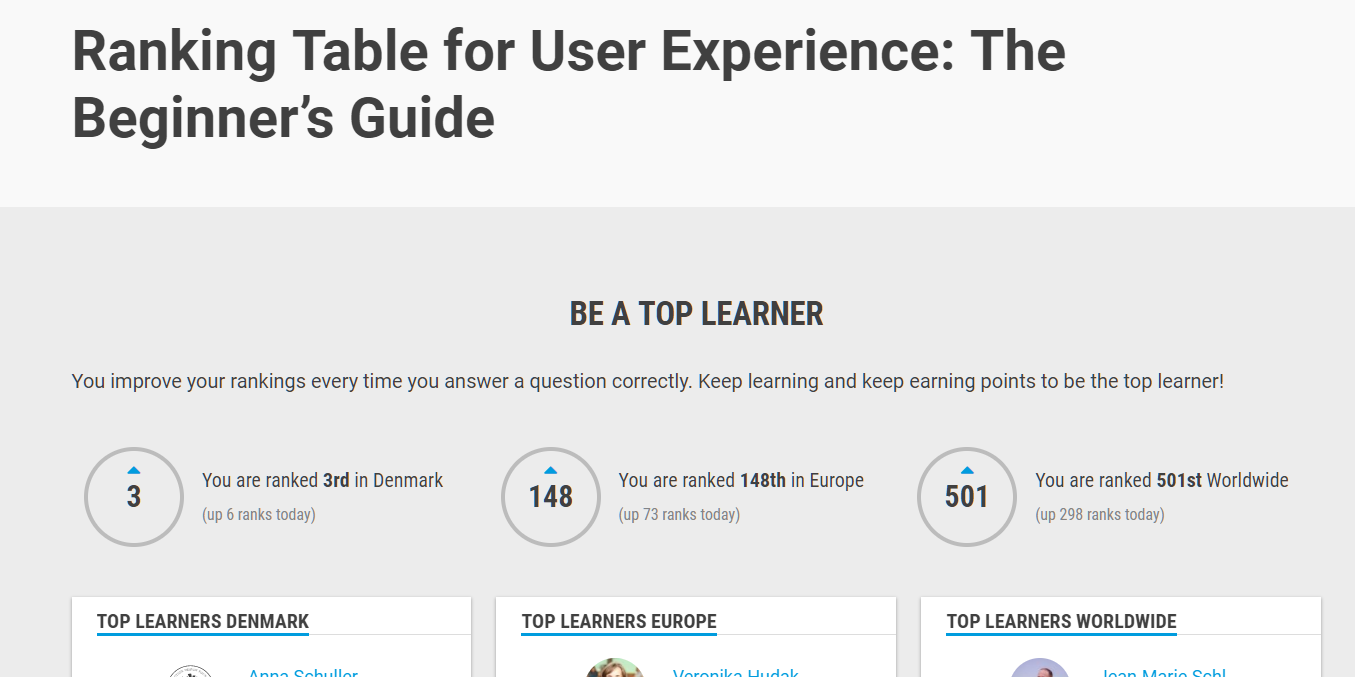
Here at the Interaction Design Foundation, we also use gamification to increase our course-takers’ intrinsic motivation for putting their best effort into their courses.
Major Gamification Pitfalls:
- Manipulation – Gamification is about motivating users by enabling them to have fun, not tricking them into doing things.
- Building a Game – If you overdo the game features, you’ll defeat the purpose of incentivizing users to complete real-world tasks.
- Magic Paint – The system you’re gamifying must be good per se. If it’s subpar, gamification cannot make it a success.
Getting Gamification Right
To get gamification right, it’s vital to know both the users and exactly how they should fulfill the goal or purpose of your gamified design, every step of the way. You also should understand that motivations will vary according to the task, objective and player. Likewise, the gamification mechanics must suit the users. So, when you choose to implement a leaderboard, points system, relationship-based approach, badges, etc., you should:
- Enhance the experience from the users’/players’ viewpoints by inserting the right gamification mechanics – First, do UX research to pinpoint who those “players” are and understand how they see their world. For instance, does their work environment suit a challenge-oriented experience with points, awards and competition? Or how about time constraints to complete the boring tasks and compulsory e-learning? Or might these seem adversarial and demotivate some users? Would a more discreet approach with elements of a journey of discovery and private personal achievement markers work best? From your research, you can create personas to help understand likely player types. From there, you can tailor a system that’s right for all stakeholders involved.
- Evaluate your design to monitor its effectiveness in bolstering user engagement – usability testing is invaluable here.
A successful project is one that covers both aspects—namely, to increase engagement through pleasurable activity and satisfy the bigger picture, the original purpose for the design. Overall, gamification is an experience you should “weave” carefully into an existing system, not a feature you insert.
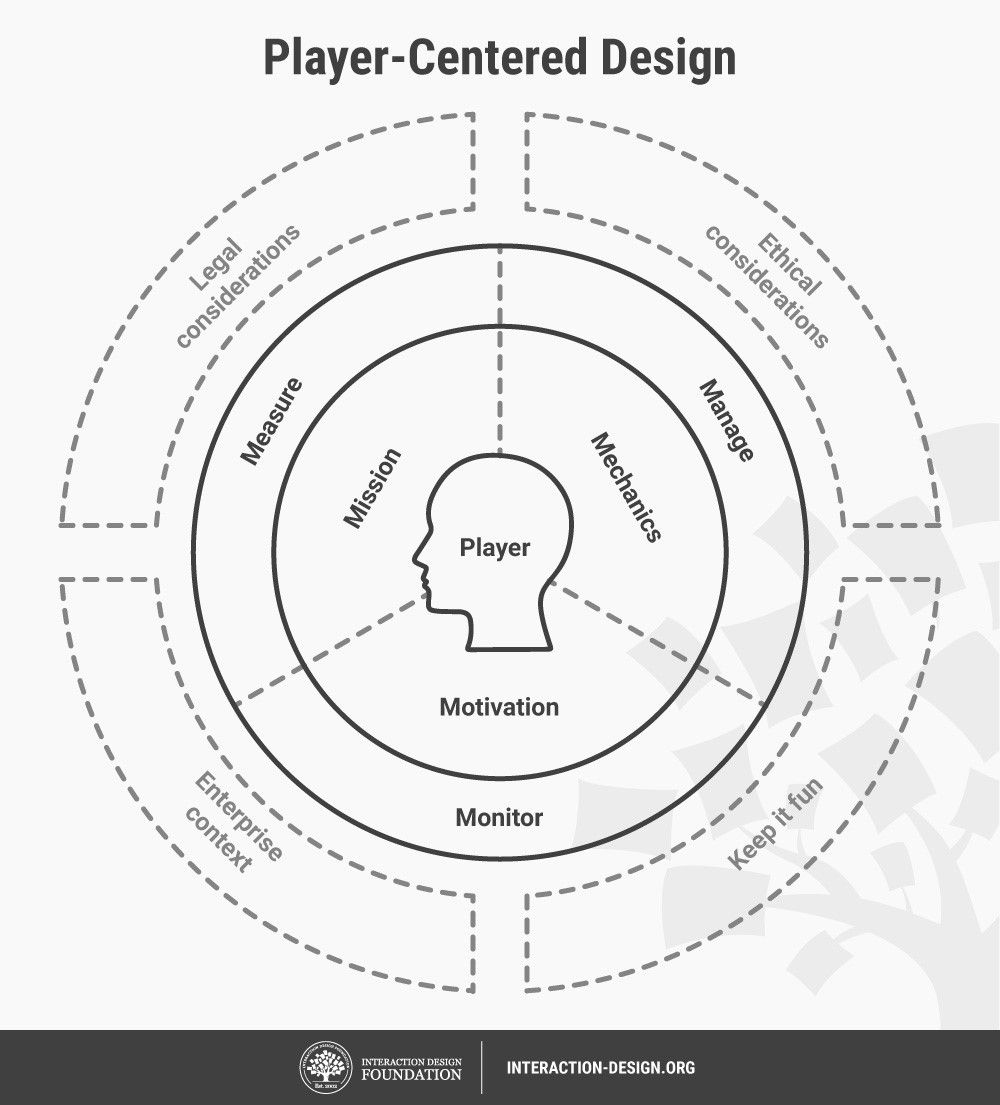
Learn More about Gamification
You can learn much more about gamification and its uses in the Interaction Design Foundation’s online course: https://www.interaction-design.org/courses/gamification-how-to-create-engaging-user-experiences
Web interface designer Peter Steen Høgenhaug captures gamification with a variety of examples and insights: https://www.smashingmagazine.com/2012/04/gamification-ux-users-win-lose/#sec2
Find examples of gamification done right – here: https://www.creativebloq.com/web-design-tips/5-examples-of-great-gamification-1233261
Explore some mechanics of gamification at a glance – here: https://uxplanet.org/gamification-in-ux-increasing-user-engagement-6437cbf702aa
Literature on Gamification
Here’s the entire UX literature on Gamification by the Interaction Design Foundation, collated in one place:Featured article
Player-Centred Design: Moving Beyond User-Centred Design for Gamification
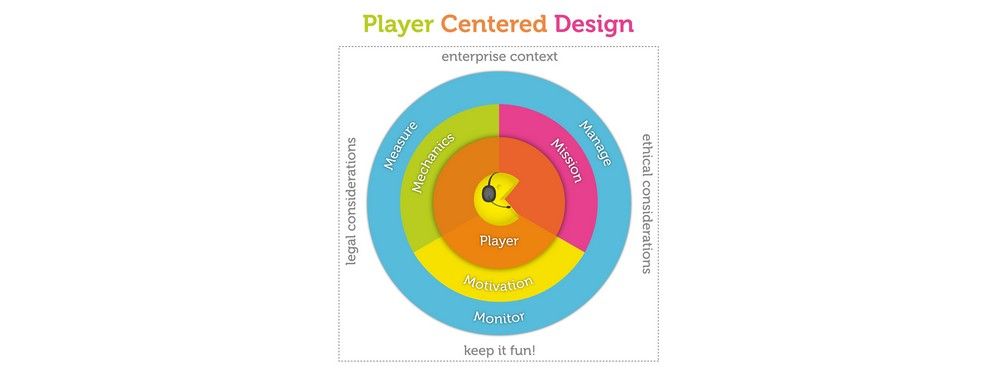
We’ve all come to think in terms of user-centred design over the years. It’s a critical component of UX design, and it helps us focus on what really matters when developing products. However, user-centred design is not enough for gamification. Here, we introduce the concept of player-centred design, which takes the idea of user-centred design to the next level.
Coping with Change
What was the first computer game you ever played? If you’re starting to enter middle age, it’s likely to have been something like Space Invaders or Pacman. How do those games stack up next to modern classics such as Grand Theft Auto or World of Warcraft? There’s a huge difference between them, isn’t there? Space Invaders may have seemed incredible when it was released in 1978; today, it looks kind of… well, basic and uninteresting. We won’t be uncharitable, as it’s hardly fair to compare something that came so much later, but the principle is true all the same.
Game play has changed, too, from ‘move left, move right and fire’ to being able to carry out incredibly complex actions. Indeed, what hasn’t changed is certainly the adrenalin rush players can feel. In the late ‘70s, that would have translated to the dread (yes, still a form of entertainment) a player would have felt on seeing the last invader of a screen speed up and strafe rockets in ultra-dangerous motions (if you’ve never played Space Invaders, you need to give it a go). Hold that thought—now transpose it upon any game you may have played in the early 21st century. The principles of entertainment and satisfaction, of “Yes!” on clearing a skill level and “Oh, sh*t!” on not making it are common to these games. Still, the differences are powerful, so we have to cope with a whole different set of dimensions in the 21st century.
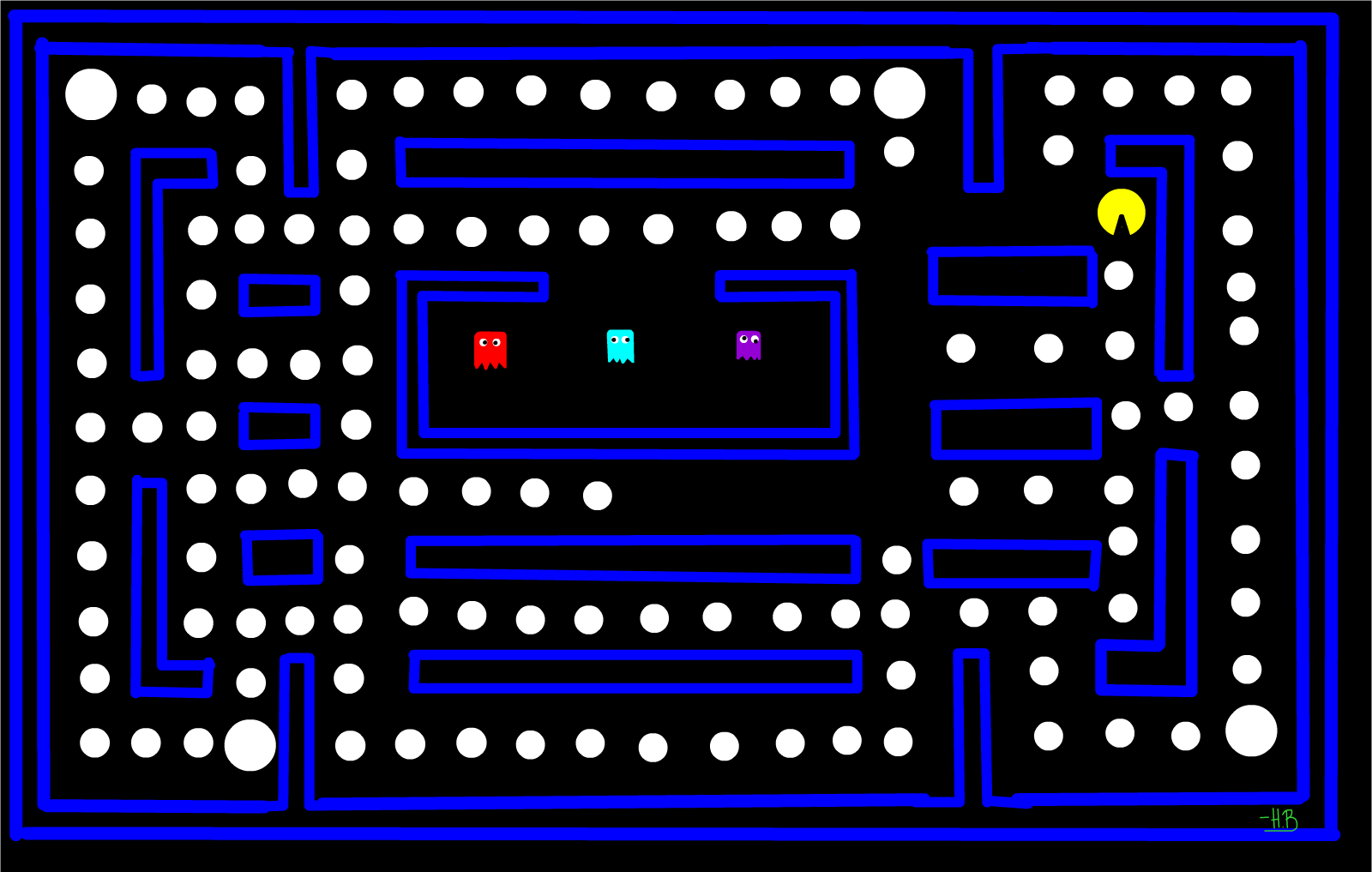 Author/Copyright holder: petsasjim1. Copyright terms and licence: Fair Use.
Author/Copyright holder: petsasjim1. Copyright terms and licence: Fair Use.
Pacman was one of the earliest popular computer games, and while it’s still fun, today’s games are far more complex and engaging. That said, why not go retro for a moment and see what these games have in common—or maybe that should be, feel what they share. If you’re thinking the “Yes!” feeling on clearing a level and the “Oh, sh*t!” sensation on getting killed, you’ve got a hole in one.
Player-Centred Design
Let’s kick off this topic by remembering that in any game, a fair degree of work is involved. From that, in the gamification of a work process, getting the user to want to take part in that work is vital.
“Games give us unnecessary obstacles that we volunteer to tackle.”
— Jane McGonigal, American game designer and author
Player-centred design builds on and extends user-centred design to a whole new level; it is a process that Janaki Kumar and Mario Herger coined in their book, Gamification at Work: Designing Engaging Business Software. We can use user-centred design to develop applications as much as we can to develop games. Player-centred design acknowledges that a game is to be played and looks at the key ingredients of making a game work for the player. You can see those elements on the diagram at the very start.
Yes, player-centred design is a powerful ally; still, you need to place it as a process into the context of your organization. It’s not meant to be a rigid framework for you to adhere to at all costs; rather, it’s been developed to enable you to adapt the framework to your people and your business. Missions, mechanics and motivations can vary widely; therefore, it’s vital to ensure that they match the organizational and individual player needs you’re targeting for them to be successful.
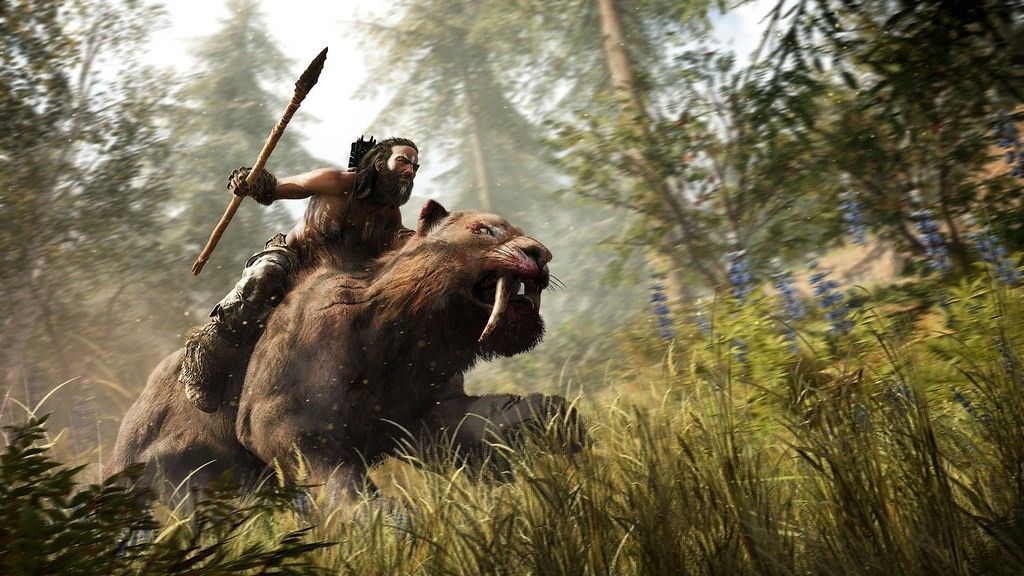 Author/Copyright holder: BagoGames. Copyright terms and licence: CC BY 2.0
Author/Copyright holder: BagoGames. Copyright terms and licence: CC BY 2.0
This scene from Farcry shows just how much games were to evolve since Pacman. Incidentally, they can only get ‘realler’.
Player-centred design is also an iterative process. That means developing something, trialing it with players, and then amending it until it hits the sweet spot where players really appreciate a specific feature. That’s why monitoring, measuring and managing are a key part of the framework. That’s why these three ‘m’s must be centremost in your mind when you sit down to apply this powerful tool in your own work.
The final part of player-centred design is balancing legal and ethical considerations and business requirements with keeping the whole thing fun. Gamification needs to meet all those requirements in order for you to make a success of the process via what end result you present to your end user.
User-centred design uses the yardsticks of efficiency, effectiveness and satisfaction to evaluate designs. Player-centred design adds engagement to this list. While user-centred design asks the question, “Can the user use the product efficiently, effectively and satisfactorily?”, player-centred design asks, “Do they want to use it in the first place?”.
Take a classic example in the workplace: getting employees to complete e-learning modules. Bear in mind that these are often geared towards satisfying company requirements (such as covering their backs vis-à-vis legislation regarding disability, gender equality, etc.) as opposed to offering staff members vocation-specific advancement. Organisations frequently approach designers when they want us to crank out the finest e-learning guides to a wide range of topics, such as ethics, diversity and data security protocols, perhaps without realising how golden an opportunity we might have there—that is, we can actually make those workers want to complete their e-learning!
Traditionally, getting workers to read S.O.P.s (Standard Operating Procedures) has been like pulling teeth for most Western organisations. If you can remember working in the previous century, you may well recall these—a printout of clauses in semi-legalese that you had sign off at the bottom so as to show you understood that, for example, standing beneath a forklift’s prongs while it’s lifting down a palette would be an exceptionally poor idea. With the advent of the internet, e-learning would make the whole process electronic. After all, what better opportunity is there for you as a designer than to work player-centred design into an otherwise dead and dry piece an employee would probably only pretend to read? If you can produce, say, a design for an e-learning module on diversity that encourages users to learn more about cultures by whetting their appetites to learn and enjoy the experience, you’re thinking player-centred—congratulations. They could move around a virtual globe, say, picking up ‘passport’ points, the idea being that while they’re learning all about cultural diversity, they’re enjoying the experience and feeling empowered. Hopefully, they’ll have forgotten that the organisation actually had the power over them to make them take the e-learning. Such is the magic a skillfully devised player-centred design can work.
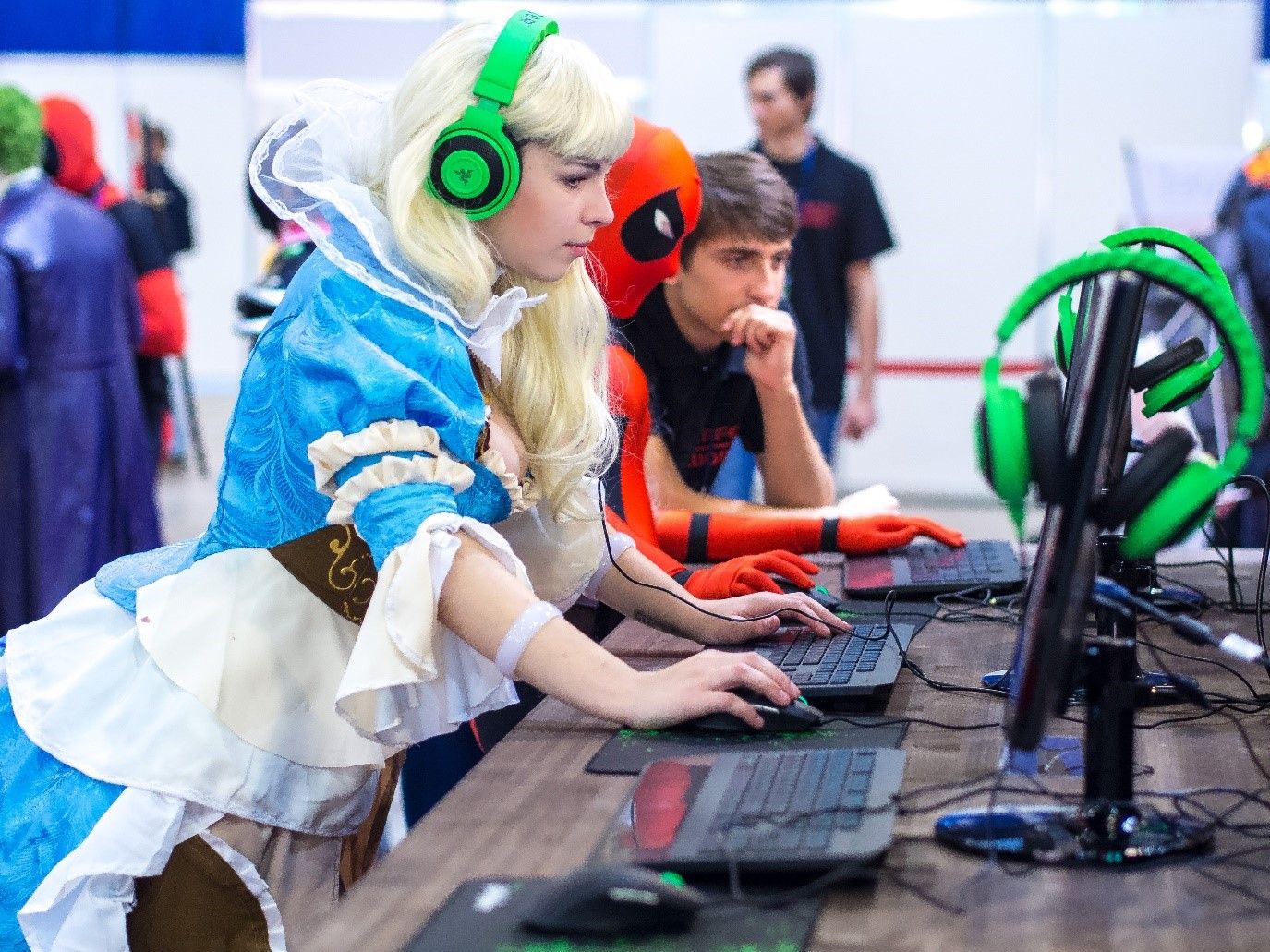 Author/Copyright holder: Sergey Galyonkin. Copyright terms and licence: CC BY-SA 2.0
Author/Copyright holder: Sergey Galyonkin. Copyright terms and licence: CC BY-SA 2.0
As you can see, when people truly embrace gaming, they’re prepared to go to extraordinary lengths to participate.
Kumar and Herger offer sound advice for us as we ponder these questions: “Gamification is about thoughtful introduction of gamification techniques that engage your users. Gamification is not about manipulating your users, but about motivating them. Ultimately, it is about good design — and good design treats the user with respect.” Here, we can cast our minds back to one of the most fundamental points about fun: you can never force or trick someone into having it; people will either have fun as a natural reaction to what you provide… or they won’t. And if they make fun of it, then that can be rather worrying.
The Take Away
Player-centred design is an extension of the idea of user-centred design. It applies uniquely to gamification design within systems which traditionally do not contain game elements. It looks at the users and asks the key question, “Do they want to use this in the first instance?”. It allows you to adapt gamification to the needs of your users and ensure that the results of the exercise support the business reasons for gamification. If you can weave player-centred design into the exact context of your audience’s organisation, you will travel a long way in starting to deliver a piece that not only gets results but one that also is popular.
References & Where to Learn More
Janaki Mythily Kumar and Mario Herger, Gamification at Work: Designing Engaging Business Software, The Interaction Design Foundation, 2014
Hero Image: Author/Copyright holder: Janaki Kumar and Mario Herger. Copyright terms and licence: CC-Att-ND
